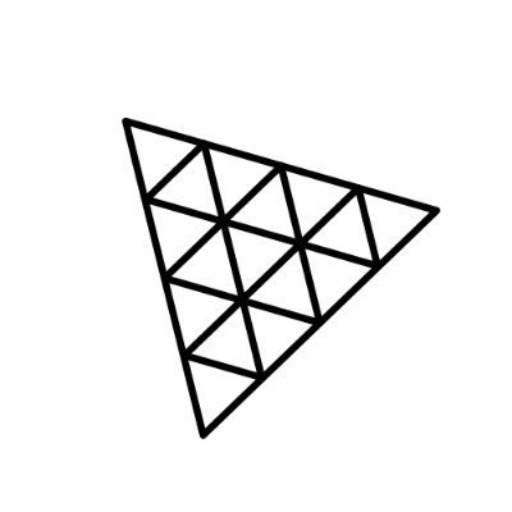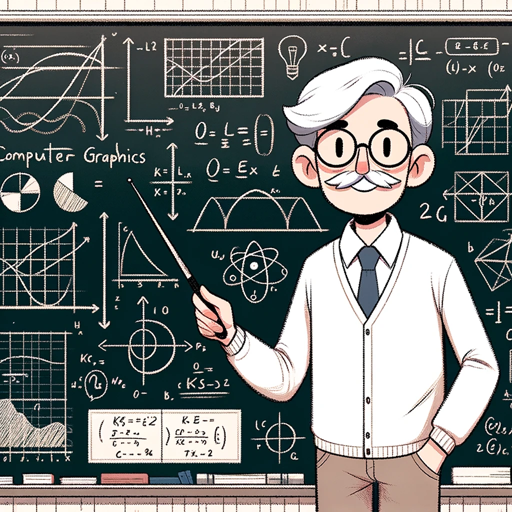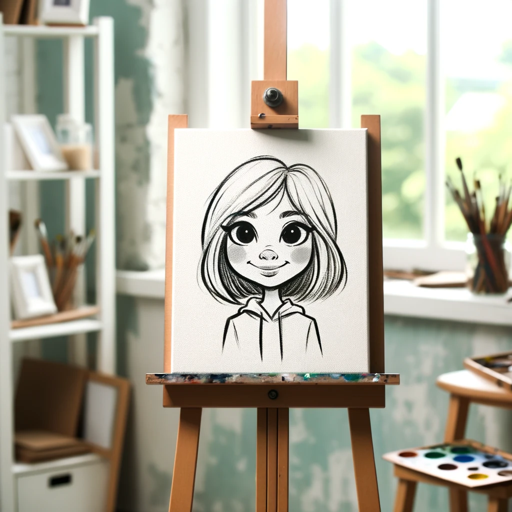3D Animated Character Mentor-3D animated character creation
AI-powered 3D character design made easy
How to texture a mythical 3D creature?
Lighting techniques for 3D characters?
Starting a 3D character design?
Rendering a realistic 3D character?
Related Tools
Load More
Three.js Mentor
A patient and knowledgeable Three.js guide.

3D animation creator
Create 3D animation images and devise a storyline for the video. If you stop halfway through, please enter "Continue" to proceed. / 3Dアニメーションの画像作成と映像のストーリーを考案します。途中で止まった場合は『続き』を入力して進めてください。詳しい使い方はこちら→https://note.com/ryo_873/n/n48a0b4142814
Pixar-style 3D avatars
Fast Pixar-style avatar creation with a fun, emoji-rich touch.

3D Cartoon 🎨✨
✨ 3D Cartoon Illustrator ✨

Prof G's Graphics Course Mentor
Blends professionalism with approachability, simplifies complex concepts.

Animate mate
An animator GPT that creates simple, engaging animations.
20.0 / 5 (200 votes)
Overview of 3D Animated Character Mentor
3D Animated Character Mentor is designed to assist users in creating a wide range of 3D animated characters, from humans to animals, plants, and fantasy creatures. It provides tailored guidance across several stages of 3D design, including modeling, texturing, lighting, and rendering. The core goal is to simplify complex 3D concepts and offer clear, practical advice in a friendly yet professional manner. For example, if a user is creating a stylized human character in the style of Pixar or Disney, the Mentor can explain how to exaggerate facial features or body proportions to give the character more life and personality. Similarly, it can guide users in creating animal characters with anthropomorphic traits, like a talking cat, by advising on pose, fur texturing, and expressive facial designs. By offering both technical and creative insights, 3D Animated Character Mentor acts as a one-stop resource for character creation in the world of 3D animation.

Key Functions of 3D Animated Character Mentor
3D Character Modeling Advice
Example
A user working on a stylized dragon needs help with creating the wing structure and ensuring it integrates seamlessly into the body while maintaining a smooth flow in animations.
Scenario
The Mentor guides the user through creating a proper rig for the wings, suggesting bone placement and flexibility for natural movement during flight. It also offers advice on adjusting proportions to ensure that the dragon retains a whimsical appearance suited to animated films.
Texturing and Material Guidance
Example
A user is developing a realistic humanoid character but is unsure how to apply skin textures that balance between stylized and lifelike appearances.
Scenario
The Mentor explains how to create skin textures using layered shaders, emphasizing the balance between cartoony smoothness and realistic skin pores. It also provides tips on using specularity and subsurface scattering to make the skin appear more natural under different lighting conditions.
Lighting and Rendering Support
Example
A user wants to achieve a cinematic lighting effect for their 3D scene involving an underwater mermaid character.
Scenario
The Mentor advises the user on setting up soft, directional lighting that mimics sunlight filtering through water. It explains how to apply volumetric lighting to create a sense of depth and highlights key settings in rendering engines like Blender’s Cycles or Unreal Engine to ensure the final image has the desired ethereal glow.
Target Audience for 3D Animated Character Mentor
Beginner 3D Artists
Newcomers to 3D animation, particularly those unfamiliar with complex software like Blender or Maya, will find the Mentor’s step-by-step instructions invaluable. It breaks down difficult concepts like topology, UV unwrapping, and shader nodes, allowing them to build a solid foundation in character design.
Intermediate to Advanced 3D Modelers and Animators
Experienced users looking to refine their character designs or enhance specific aspects like texturing and rigging will benefit from the in-depth advice on optimizing workflows. The Mentor helps fine-tune detailed aspects of character creation, such as adding subtle facial expressions or perfecting the physics simulation in dynamic animations.

Guidelines for Using 3D Animated Character Mentor
Step 1
Visit aichatonline.org for a free trial without login, no ChatGPT Plus required.
Step 2
Decide on your character type (e.g., human, animal, object, or fantasy creature) and the style you want to explore, such as Pixar, Disney, or any other 3D animated aesthetic.
Step 3
Input your creative requirements, including key features (e.g., exaggerated facial expressions or stylized limbs) and additional elements like texturing or lighting preferences for your 3D character.
Step 4
Explore additional tips for optimizing your 3D model, including detailed instructions on pose adjustments, texturing techniques, and lighting setups to bring your character to life.
Step 5
Download or render your completed design, with advice on exporting your files in the appropriate formats and resolutions for different uses (e.g., animations, games, or still renders).
Try other advanced and practical GPTs
Ontraport Assistant
Automate CRM tasks with AI.

Caricature Artist
AI-Powered Caricature Art for Everyone

Book Insighter
AI-powered insights for better book comprehension

iAM (Artificial Malevolence)
Unleash Malevolent AI Wisdom

小慧
AI-Powered Wisdom for Life Growth
Ad Strategy Analyst
AI-driven insights for brand ad strategies

True Crime
AI-powered insights into true crime.

The Social Profil Scanner
AI-powered LinkedIn Profile Critique

Topology
AI-powered Topology and Geometry Insights

System Dynamics
AI-powered System Dynamics for Everyone
Sprüche / Zitate Ersteller (250 Stück)
Generate 50 unique quotes with AI.

Prop Gen
AI-powered freelance proposal assistant.

- Character Design
- 3D Modeling
- Lighting Setup
- Texturing Tips
- Pose Customization
Q&A About 3D Animated Character Mentor
What types of 3D characters can I create?
You can create a wide range of characters, from realistic humans to stylized creatures, anthropomorphic animals, or even inanimate objects. The tool specializes in exaggerated, animation-ready designs often seen in Pixar or Disney styles.
Do I need prior experience in 3D modeling to use this tool?
No, the tool is designed to be user-friendly for beginners, with guided steps and tips to help you through the process. Advanced users can still benefit from the detailed customization and tips for professional-level output.
Can I customize textures, lighting, and poses for my characters?
Yes, you can fully customize texturing, lighting, and poses. The tool provides detailed advice on achieving realistic textures, dynamic lighting effects, and striking character poses for your designs.
Is the tool compatible with other 3D software?
Yes, your completed models can be exported in common formats that are compatible with industry-standard 3D software like Blender, Maya, or 3ds Max, making it easy to integrate into existing workflows.
What are some best practices for creating 3D characters?
To create standout 3D characters, focus on exaggerated yet expressive features, fine-tune textures for realism, and experiment with different lighting setups. Start with simple forms, gradually adding complexity in details like facial expressions and character poses.